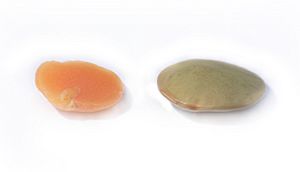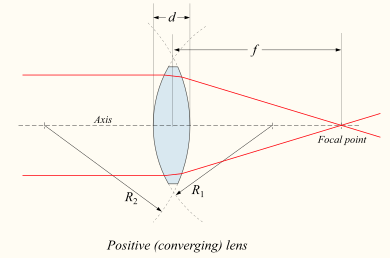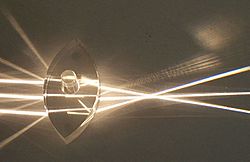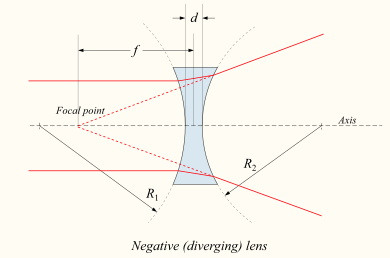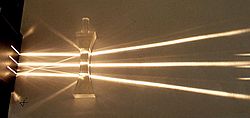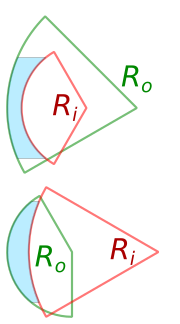Lens (optics) facts for kids
A lens is a clear object, like a piece of glass or plastic, that changes how things look by bending light. This bending of light is called refraction. Lenses can make objects appear bigger, smaller, or even upside-down.
You use lenses every day! They are found in eyeglasses, contact lenses, cameras, and telescopes. Even your own eye has a lens inside it. Lenses come in different shapes, and each shape changes light in a unique way.
Contents
The Story of Lenses
The word "lens" actually comes from the Latin word for "lentil"! This is because the first lenses looked a lot like the shape of a lentil bean.
People have known about lenses for a very long time. The oldest written record of lenses comes from an ancient Greek play by Aristophanes. In this play, lenses were used with sunlight to start fires.
Many people think Galileo Galilei invented the telescope. While he didn't invent it, he greatly improved a design he learned from Dutch lensmakers. He was likely the first person to use telescopes to make important astronomical observations, like looking at the moon and planets.
Different Kinds of Lenses
Lenses are named based on the curves of their two surfaces. Think of them like different shapes of glass that light passes through.
Converging Lenses
Converging lenses are also called positive lenses. They make parallel light rays come together at a single point, called a focus, behind the lens. This is why they are called "converging" – they bring light together.
- Biconvex Lens: This lens is curved outwards on both sides, like two domes joined together. It's often just called a convex lens.
- Plano-Convex Lens: This lens has one flat side and one side that curves outwards.
A special type of thick convex lens is a ball lens, which is completely round. These are sometimes used in fun photography. While they can gather light from all directions, they can also cause more blurring than thinner lenses.
Diverging Lenses
Diverging lenses are also called negative lenses. They spread out parallel light rays that pass through them. Instead of focusing light, they make it spread apart.
- Biconcave Lens: This lens curves inwards on both sides, like two bowls joined together. It's often just called a concave lens.
- Plano-Concave Lens: This lens has one flat side and one side that curves inwards.
Meniscus Lenses
A meniscus lens has one side that curves outwards (convex) and one side that curves inwards (concave). These are the most common type of lenses used in eyeglasses because their shape helps reduce some vision problems.
- A negative meniscus lens is thinner in the middle and spreads light out.
- A positive meniscus lens is thicker in the middle and brings light together.
Even if a lens has two equally curved surfaces, its thickness means it will still slightly bend light. To make a lens that truly doesn't bend light at all, a meniscus lens needs slightly different curves on each side.
Related pages
Images for kids
-
Light being refracted by a spherical glass container full of water. This drawing is from Roger Bacon, 13th century.
-
A large lens for the LSST, a telescope designed to survey the sky.
-
A close-up view of a flat Fresnel lens.
See also
 In Spanish: Lente para niños
In Spanish: Lente para niños


